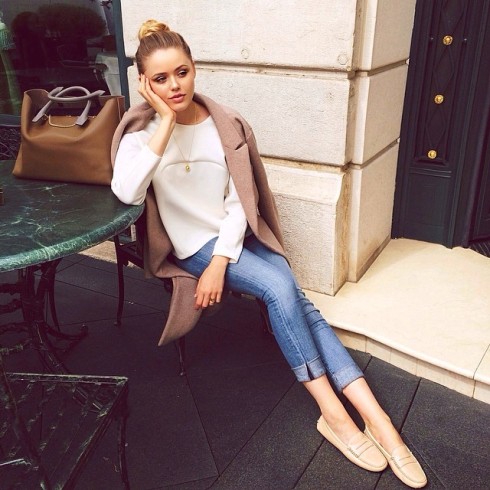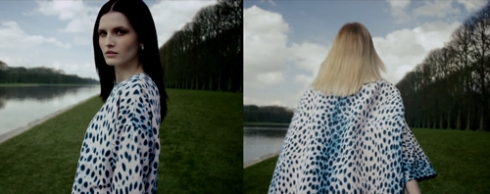
“We are entering into a period of significant opportunity driven by accelerated disruption coming from the continued pivot of customers into the digital space,” Art Peck, president of growth, innovation and digital at Gap Inc (which includes Gap, Banana Republic, Old Navy, Piperlime, Athleta and Intermix brands), said at Goldman Sachs’ fifth annual dotCommerce day in New York this month.
His key message: we might think we’ve seen change over the past decade, but in retail specifically we’re on the cusp of something much bigger. It will be equivalent to that of the 1950s and 60s when consumers moved from local variety stores to suburban bix box retailers, he said, referring to the wave that saw many of today’s mega brands, including Walmart and K-mart, hit the market.
What it’s about, he said, is the customer. Consider these statistics: a decade ago, only 3% of consumers in the US bought apparel and accessories online. 15% of them engaged online but still purchased in physical stores, and the remainder only shopped offline and had no digital engagement at all.
Fast forward to today and about 15% of the market is shopping online for apparel and accessories. Those not engaged with brands digitally has shrunk to only 13%, while the remainder this time are engaged online, even if they then still buy in the real world. “What that does,” said Peck, “is put an opportunity and an obligation on us.”
At this point in time the bulk of the industry has a transactionally-efficient website that acts as a complementary channel to their stores. What we need to move towards, he explained, is an experience both online and off that ties together the overall vision of the brand. “The digital expression of our brands needs to be a holistic, aspirational expression of the brand because that is in many cases what customers now base their choice on.”
Interestingly, it’s digital that he believes will also enable the company to achieve that uniform expression of the brand across its store portfolio no matter the size of the outlet. Today at a flagship store consumers are exposed to the entire brand in an aspirational way, whereas at a mall it may just be a small subset of that intention, and often not an aspirational one at all.
“Our vision here is we bring digital together with physical, and regardless of the store, where it is, the size that it is, the mall that it’s in – we give customers exposure consistently to the entire aspirational expression of the brand,” he emphasised.
At this point in time, Gap is working on doing so with initiatives such as replacing all legacy systems in stores with web services; so in-store and e-commerce now operate on one platform. The company therefore now has the capability to have global, virtual visibility on the availability of its inventory, and has been able to introduce the likes of its ‘reserve in store’ option for shoppers.
As of next month it is also testing out an ‘order in store’ system in a bid to counter that feeling of disappointment when consumers can’t find what they’re looking for on a trip out. Said Peck: “Our commitment with assisted or unassisted ‘order in store’ is you’ll never leave the store empty-handed, whether that’s a physical bag or a virtual bag that you’re carrying with you… That’s a huge economic opportunity for us. It’s moving that conversion yield.”
Omnichannel is the obvious buzzword he said, holding up his own smartphone as an example of the most important device for retailers to be thinking about. Mobile is pervasive, but also persistent in that it stays with consumers all of the time, he explained. It’s for that reason it’s a key driver for loyalty programmes, something the company is also focusing on with a new scheme testing at Banana Republic stores imminently.
Peck referred to loyalty as a ‘big one’ for the company, a driver for frequency and for share of wallet, but more importantly as an opportunity to “bring our personalisation capabilities and customisation relevance to bear in a store environment”. At the moment 60% of people visiting the website are recognised as unique visitors, enabling Gap to personalise experiences based on things like browsing and purchase history. Doing so is providing movement on numbers like conversion, time on website, CTR and more, said Peck.
“Good things happen for the customer if they’re willing to self-identify and tell us who they are at the beginning of a shopping experience. They do on the website, they don’t in our stores. If you come into our stores today we won’t recognise you until you tender, if we recognise you then.”
This loyalty programme is about providing the customer with the opportunity to self-identify in order for the company to create a much more relevant set of experiences compared to when they shop anonymously, he explained.
It’s that word, relevancy, that he picked up on as most important: “There’s lots of talk out there about big data – to me big data, personalisation is focused on an outcome of relevance. That’s what we’re working on.”
Tags: art peck, brand, digital, disruption, ecommerce, fashion, Gap, gap inc, in-store, loyalty, mobile, omni, omnichannel, retail, retailer, shop, store, tech, technology
















